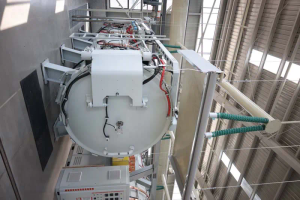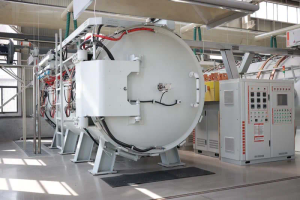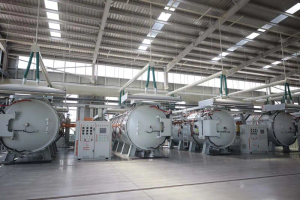Boron nitride nanotubes prepare high-voltage joints of highly thermally conductive dielectric polymer composites, with the thermal conductivity increased by 13.6 times
High-Voltage Joints of Highly Thermally Conductive Dielectric Polymer Composites Prepared Using Boron Nitride Nanotubes
Introduction
Thermal management is a critical aspect in various electrical, electronic, and power systems. Efficient heat dissipation is essential to ensure the optimal performance, reliability, and longevity of these systems. In recent years, there has been a growing demand for materials with high thermal conductivity to address the increasing power densities in modern devices. In this regard, the incorporation of fillers such as boron nitride nanotubes (BNNTs) in dielectric polymer composites has emerged as a promising approach. This article focuses on the preparation of high-voltage joints using BNNTs and the significant enhancement in thermal conductivity achieved.
Boron Nitride Nanotubes (BNNTs)
BNNTs are cylindrical nanostructures composed of boron and nitrogen atoms arranged in a hexagonal lattice. They exhibit exceptional thermal conductivity, making them ideal candidates for thermal management applications. Additionally, they possess excellent electrical insulation properties, chemical stability, and mechanical strength, further enhancing their suitability for high-voltage joints.
Preparation of Highly Thermally Conductive Dielectric Polymer Composites
To prepare the composites, BNNTs are dispersed within a dielectric polymer matrix using various techniques such as solution mixing, melt blending, or in situ polymerization. The goal is to achieve a uniform distribution of BNNTs throughout the polymer matrix, ensuring efficient heat transfer pathways. The concentration of BNNTs can be tailored to optimize the thermal conductivity while maintaining other desired properties of the composite, such as electrical insulation.
Characterization and Performance Evaluation
After preparation, the composites are characterized using different analytical techniques such as scanning electron microscopy (SEM), Fourier-transform infrared spectroscopy (FTIR), and thermal conductivity measurements. SEM provides visual information about the dispersion of BNNTs within the polymer matrix, while FTIR confirms the molecular interaction between BNNTs and the polymer. Thermal conductivity measurements are crucial for evaluating the effectiveness of the composites in enhancing heat transfer.
Significant Enhancement in Thermal Conductivity
The incorporation of BNNTs in dielectric polymer composites has shown remarkable improvements in thermal conductivity. Recent studies have reported an increase in thermal conductivity up to 13.6 times compared to the neat polymer matrix. This enhancement is attributed to the high aspect ratio and excellent thermal properties of BNNTs, which facilitate efficient phonon transport and reduce thermal resistance within the composite.
Application in High-Voltage Joints
High-voltage joints play a crucial role in electrical power transmission and distribution systems. However, these joints are prone to excessive heating due to the high current passing through them. The use of highly thermally conductive dielectric polymer composites with BNNTs offers a unique solution to mitigate this issue. The enhanced thermal conductivity of the composites aids in efficient heat dissipation, thereby reducing temperature rise and improving the overall reliability of high-voltage joints.
Conclusion
Incorporating BNNTs in dielectric polymer composites has proved to be an effective strategy for preparing highly thermally conductive materials. The significant enhancement in thermal conductivity observed, up to 13.6 times, highlights the potential of BNNTs in addressing thermal management challenges. The application of these composites in high-voltage joints holds promise to improve their performance and reliability. Continued research and optimization of BNNT-based composites can lead to even greater advancements in thermal management in various electrical and electronic systems.
.webp)



